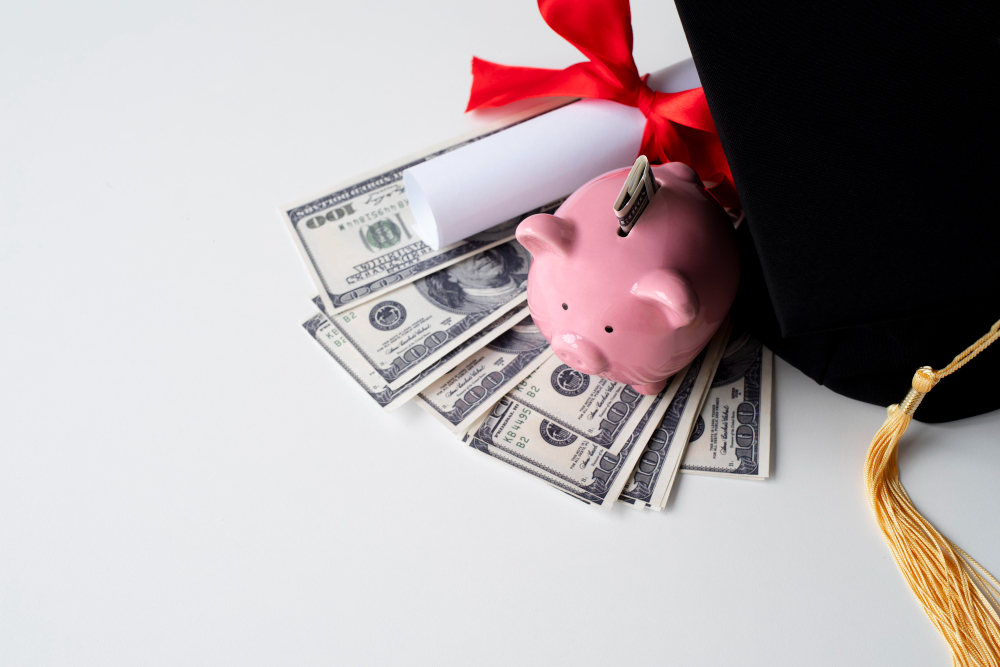The student loan forgiveness is not just a simple program to help aspiring students; it is also a critical financial reform. The rise of the debt burden on students and graduates is a big problem. That is when programs like debt forgiveness make an entry. In this blog, we will discuss how evolving forgiveness programs help secure relief, financial stability, and long-term economic independence.
What Is Student Loan Forgiveness?
As you can understand by the name, student loan forgiveness is a policy or program especially aimed at helping borrowers gain loan forgiveness. This loan forgiveness can be partial or in full settlement, it totally depends on the lender. This program helps the students get released from the obligation to repay their student debt.
These student loan forgiveness programs are typically offered by the state government or specific institutions for public benefit. The public benefit includes models like public service, teaching, healthcare, or specific repayment plans. However, in the year 2025, this student loan forgiveness program has become one of the key elements. Especially in helping students gain higher education and financial reform.
Why Loan Forgiveness Matters In 2025?
With time, the cost of education has reached new heights. The economic uncertainty plays a great role in making higher education feel impossible without a loan. The time is lost when education used to be affordable; now it costs money.
For many graduates, their monthly loan repayment EMI has restrained them from buying what they truly need. It can be buying homes, starting a new business, or saving for the future. What is when loan forgiveness programs come into play, and help such students live better. Loan forgiveness programs not only provide relief by reducing or eliminating this debt. But it also helps such individuals to contribute more actively to the economy.
Key Types Of Student Loan Forgiveness Programs In 2025
1. Public Service Loan Forgiveness (PSLF):
The Public Service Loan Forgiveness program is one of the most popular forgiveness programs in 2025. This program is especially for those people who work in qualifying public service jobs. For instance, government positions or nonprofit organizations. If you have chosen this program, you will need to make at least 120 qualifying payments under an income-driven repayment (IDR) plan. Once you have done that, the rest of your loan amount will be forgiven by your lender. Yes! It’s that simple.
2. Teacher Loan Forgiveness:
This program is especially for the teachers who are working in low-income schools or educational service agencies. This program helps the qualified teachers to gain a forgiveness of up to $17,500. In the year 2025, multiple reforms have made this forgiveness program more accessible to the general public. You must be wondering how. Well, it has done so just by expanding eligibility to include additional teaching roles and rural schools.
3. Income Drive Repayment Forgiveness (IDR) Forgiveness:
Under this program, all you need to do is pay a percentage of your discretionary income each month. Once you have paid this consistent payment for the next 20-25 years, the rest of your loan amount will be forgiven. In 2025, new income adjustments have made monthly payments more manageable, especially for middle-income earners.
4. Healthcare And Essential Worker Forgiveness:
Since the last major pandemic of COVID-19, many governments have prioritized professions in the healthcare industry. For instance, doctors, nurses, and essential healthcare workers. In the year 2025, this program has been expanded. Now it also includes mental health professionals, social workers, and community healthcare staff.
5. State Specific Forgiveness Programs:
Many U.S. states and international governments have introduced local forgiveness plans to retain the original, raw talent. For instance, states may offer partial forgiveness to graduates who stay and work in rural or underserved areas.
Eligibility Criteria:
Eligibility for student loan forgiveness varies depending on which program or policy you choose or have opted for. However, generally, the eligibility criteria for loan forgiveness programs include the following:
1. Holding federal student loans (private loans are often excluded).
2. Working in a qualifying job or sector.
3. Making a specific number of qualifying monthly payments.
4. Being enrolled in an income-driven repayment plan (for PSLF and IDR).
5. Meeting teaching or healthcare service commitments.
Make sure to always verify the requirements of the program through official channels, since program guidelines may evolve in 2025.
Benefits Of Loan Forgiveness:
1. Financial Relief:
Having a loan forgiveness program helps in reducing or even eliminating your burden of debt. It helps you free up income for savings or investments.
2. Career Flexibility:
Student loan forgiveness programs directly encourage graduates to pursue jobs in public service or rural areas. That too, without having any fear of repayment of their loan amount.
3. Economic Growth:
The debt forgiveness helps you gain financial control and stimulates your spending and business investment.
4. Mental Health Improvement:
It provides relief from debt stress and improves your overall well-being.
Potential Drawbacks:
While the debt forgiveness programs come with their own set of benefits, we can’t neglect the major drawbacks they can have.
1. Long Commitment:
Most of the debt forgiveness programs require years of service or payments before forgiveness applies.
2. Tax Implications:
In some cases, forgiven debt may be considered taxable income.
3. Limited Eligibility:
Not everyone can qualify for these forgiveness programs; there is a limited eligibility criterion for people. For instance, private loan holders may be excluded.
4. Changing Policies:
The future is uncertain, and political shifts could impact program rules and availability.
Conclusion:
In the year 2025, student loan forgiveness is not just a hope for borrowers who are facing debt challenges, but also a savior. Make sure you are all informed when you are opting for qualifying paths, and your documents are well prepared. This process of debt forgiveness can not only help you secure relief but also achieve long-term financial freedom.
